Physicists have succeeded in making a new imaging technique ready for use on humans where radioactive markers and radiation are not necessary.
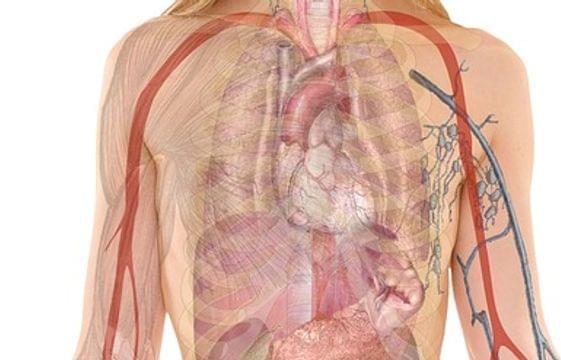

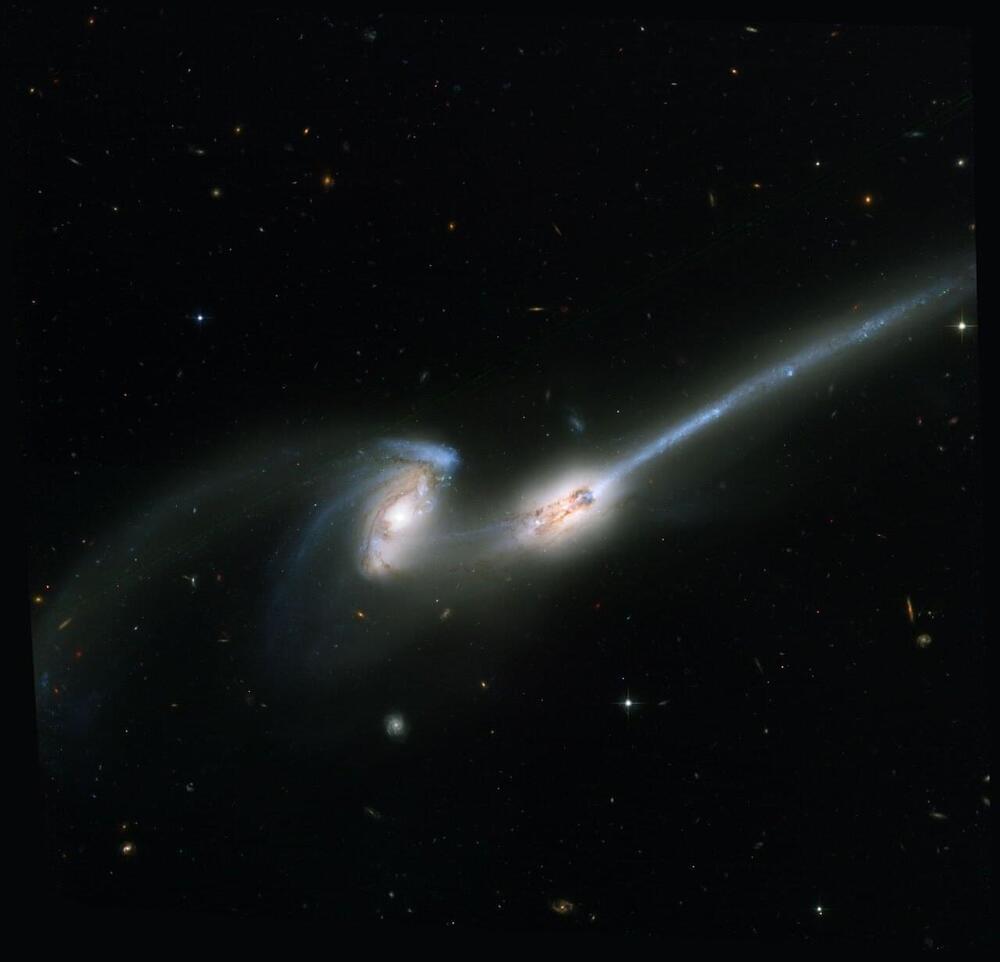
With breakthroughs in astronomical observation, scientists now have confirmed the existence of supermassive black holes at the centers of galaxies. The recent release of black hole images has further charged people’s curiosity about black holes while providing additional evidence to support Einstein’s general theory of relativity.
These supermassive black holes range in mass from millions to billions of solar masses. Astonishingly, some of these black holes have formed less than a billion years after the Big Bang. Understanding how these black holes formed and grew to such enormous mass in such a short period of time has always been an important topic in modern astrophysics.
A research team composed of Chi-Hong Lin and Ke-Jung Chen from the Institute of Astronomy and Astrophysics, Academia Sinica (ASIAA) and Chorng-Yuan Hwang from the Institute of Astronomy at National Central University has made significant new advances in the formation theory of supermassive black holes. The research results have been published in The Astrophysical Journal.
Another day, another mind-bending discovery by the James Webb Space telescope!And this time it has caught glimpse of possible first ever Dark Stars! What are dark stars and why is this discovery so huge?
Intriguing insights have emerged from a collaborative effort involving three astrophysicists from The University of Texas at Austin, and Colgate University. Their investigation delved into the images captured by the James Webb Space Telescope, leading to the identification of three luminous objects that could potentially be dark stars.#darkmatter #stars #jameswebbspacetelescope Join Lab360 to get access to some amazing perks:
https://www.youtube.com/channel/UCZYqWTQJzJaMW7jFG16p8ug/joinSubscribe:
http://bit.ly/1V77IUhWelcome to Lab 360! The ultimate destination for the latest space news and space documentaries from the world of astronomy and astrophysics. Stay updated with all the current discoveries from NASA, James Webb Space Telescope, along with easily explained videos on black holes, asteroids, galaxies, planets, and more.
You will also find a collection of easy-to-perform experiments that will feed the science enthusiast in you! Are you ready?
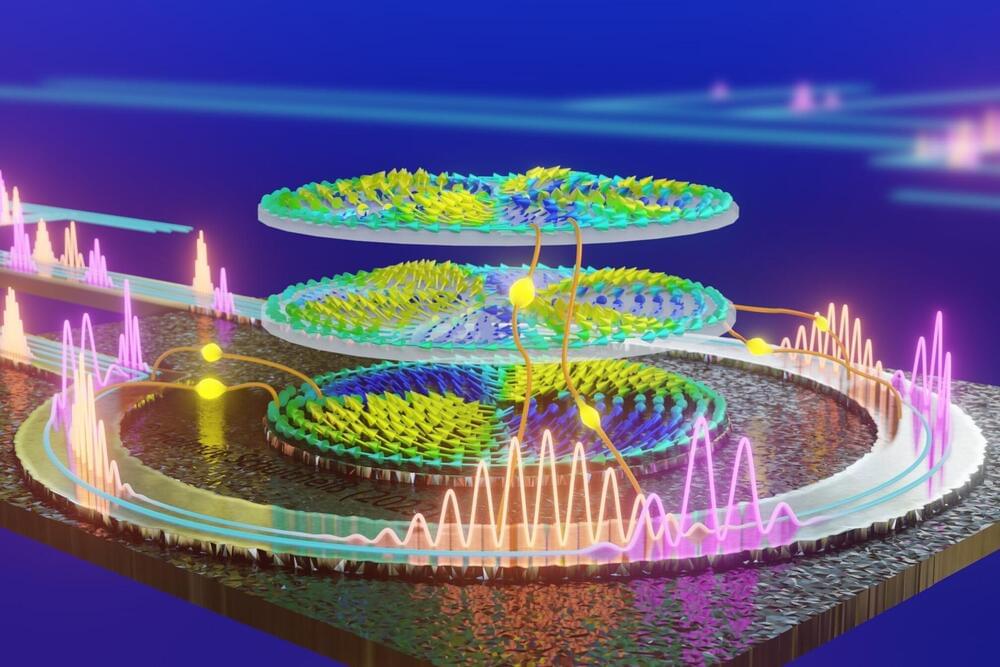
Neuromorphic computers do not calculate using zeros and ones. They instead use physical phenomena to detect patterns in large data streams at blazing fast speed and in an extremely energy-efficient manner.
In their project NIMFEIA, Katrin and Helmut Schultheiß along with their team from the Helmholtz-Zentrum Dresden-Rossendorf (HZDR) have now taken this technology a tremendous step forward. They also demonstrated that their approach can be seamlessly integrated into conventional chip manufacturing. Their findings have now been published in Nature Communications.
What the researchers have developed at the HZDR-Institute of Ion Beam Physics and Materials Research is referred to by many names. “Neuromorphic computing,” for example, is one term, as the processes resemble those that occur within the brain. “Unconventional computing” is another name, as the technology is so different from the data processing that we are accustomed to today, which uses the Boolean logic of zeros and ones.
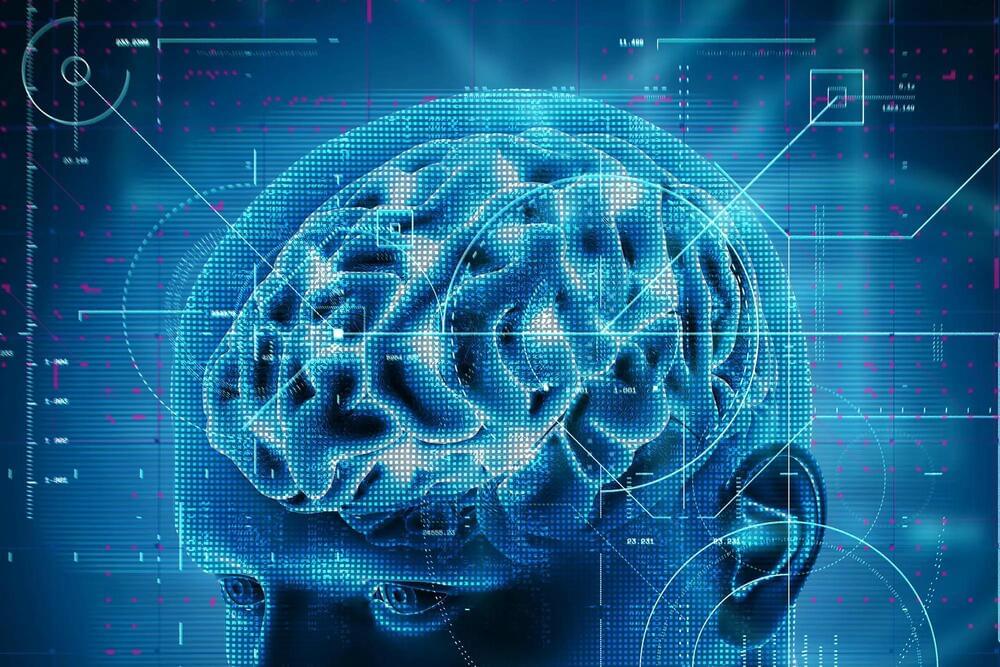
For over a hundred years, scientists have held the belief that our thoughts, feelings, and dreams are shaped by the way various brain regions interact via a vast network of trillions of cellular connections.
However, a recent study led by the team at Monash University’s Turner Institute for Brain and Mental Health has examined more than 10,000 distinct maps of human brain activity and discovered that the overall shape of an individual’s brain has a much more substantial impact on our cognitive processes, emotions, and behavior than its intricate neuronal connectivity.
The study, recently published in the prestigious journal, Nature draws together approaches from physics, neuroscience, and psychology to overturn the century-old paradigm emphasizing the importance of complex brain connectivity, instead identifying a previously unappreciated relationship between brain shape and activity.
China’s state media Xinhua claims that at least 300,000 people have worked on China’s space projects, almost 18 times the number of employees NASA has. Yes, the space race between the United States and China is set for a new and exciting turn, as the latter is geared to challenge the James Webb Space telescope with its fleet of tiny satellites, as they dive into deep space.#nasa #china #space Join Lab360 to get access to some amazing perks:
https://www.youtube.com/channel/UCZYqWTQJzJaMW7jFG16p8ug/joinSubscribe:
http://bit.ly/1V77IUhWelcome to Lab 360! The ultimate destination for the latest space news and space documentaries from the world of astronomy and astrophysics. Stay updated with all the current discoveries from NASA, James Webb Space Telescope, along with easily explained videos on black holes, asteroids, galaxies, planets, and more.
You will also find a collection of easy-to-perform experiments that will feed the science enthusiast in you! Are you ready?
Observations made by NASA
Established in 1958, the National Aeronautics and Space Administration (NASA) is an independent agency of the United States Federal Government that succeeded the National Advisory Committee for Aeronautics (NACA). It is responsible for the civilian space program, as well as aeronautics and aerospace research. Its vision is “To discover and expand knowledge for the benefit of humanity.” Its core values are “safety, integrity, teamwork, excellence, and inclusion.” NASA conducts research, develops technology and launches missions to explore and study Earth, the solar system, and the universe beyond. It also works to advance the state of knowledge in a wide range of scientific fields, including Earth and space science, planetary science, astrophysics, and heliophysics, and it collaborates with private companies and international partners to achieve its goals.
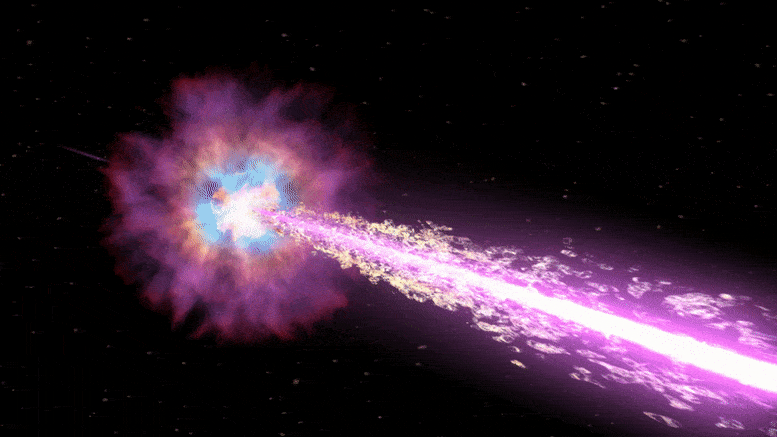
Last year, telescopes around the world registered the brightest cosmic explosion of all time. Astrophysicists can now explain what made it so dazzling.
Few cosmic explosions have attracted as much attention from space scientists as the one recorded on October 22 last year and aptly named the Brightest of All Time (BOAT). The event, produced by the collapse of a highly massive star and the subsequent birth of a black hole.
A black hole is a place in space where the gravitational field is so strong that not even light can escape it. Astronomers classify black holes into three categories by size: miniature, stellar, and supermassive black holes. Miniature black holes could have a mass smaller than our Sun and supermassive black holes could have a mass equivalent to billions of our Sun.
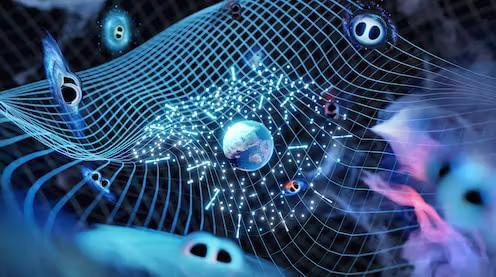
When black holes and other enormously massive, dense objects whirl around one another, they send out ripples in space and time called gravitational waves. These waves are one of the few ways we have to study the enigmatic cosmic giants that create them.
Astronomers have observed the high-frequency “chirps” of colliding black holes, but the ultra-low-frequency rumble of supermassive black holes orbiting one another has proven harder to detect. For decades, we have been observing pulsars, a type of star that pulses like a lighthouse, in search of the faint rippling of these waves.
Today, pulsar research collaborations around the world – including ours, the Parkes Pulsar Timing Array – announced their strongest evidence yet for the existence of these waves.
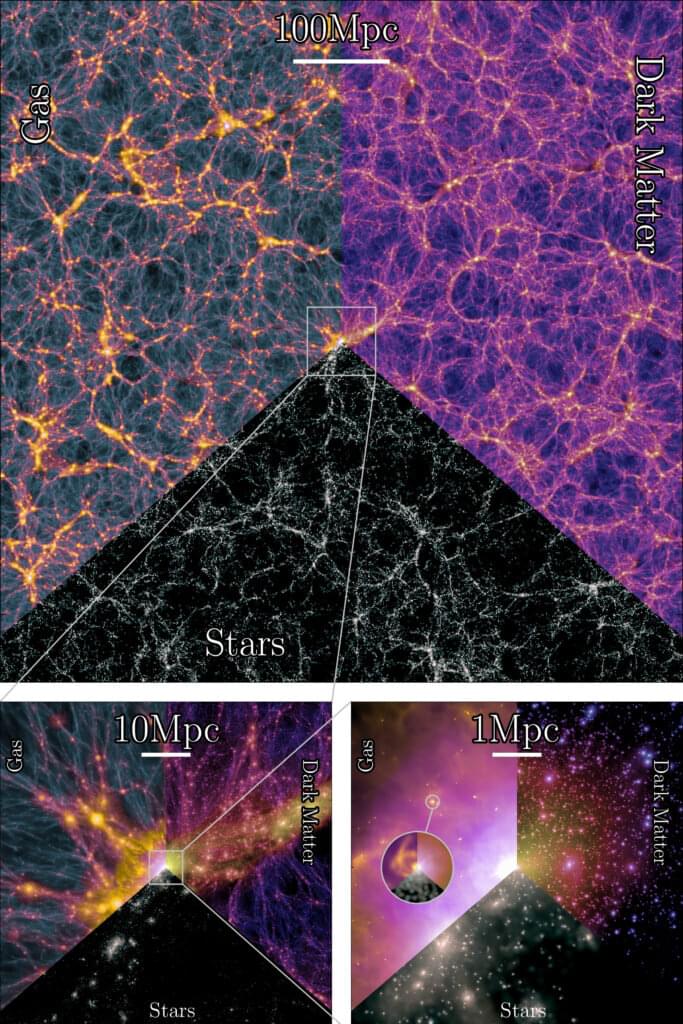
York University and an international team of astrophysicists have made an ambitious attempt to simulate the formation of galaxies and cosmic large-scale structure throughout staggeringly large swaths of space.
First results of their MillenniumTNG project are published in a series of 10 articles in the journal Monthly Notices of the Royal Astronomical Society. The new calculations help to subject the standard cosmological model to precision tests and to unravel the full power of upcoming new cosmological observations, say the researchers including York Assistant Professor Rahul Kannan.
In recent decades, cosmologists have gotten used to the perplexing conjecture that the universe’s matter content is dominated by enigmatic dark matter and that an even stranger dark energy field that acts as some kind of anti-gravity to accelerate the expansion of today’s cosmos. Ordinary baryonic matter makes up less than five percent of the cosmic mix, but this source material forms the basis for the stars and planets of galaxies like our own Milky Way.